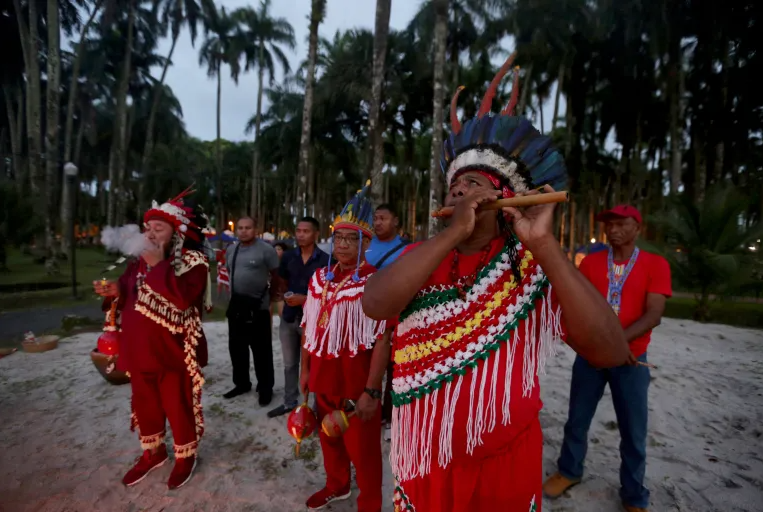
Indigenous groups in the Brazilian Amazon region have always faced challenges in texting in their local languages, but one app has come up with a solution that allows these communities to use their language characters for communication, according to Agence France-Presse.
“Lincladu” is the name of the app launched in August 2022, composed of “Lin” referring to indigenous languages, and “Cladu” derived from the Portuguese word “teclado,” meaning keyboard.
The app aims to provide indigenous people living in remote areas of the vast Amazon as well as urban centers with a digital keyboard suitable for their languages when network connectivity is available to them.
Cristina Kirino Mariano from the Tikuna indigenous group says, “The Lincladu app greatly benefits me and indigenous people because before its creation, we couldn’t write what we wanted on our phones.”
Not all members of these groups are fluent in Portuguese, the official language of Brazil, and phones sold in the country are only equipped with the Latin characters used in this language.
Previously, the cultures of indigenous populations in the region, now known as Brazil, were primarily oral, but writing entered the area when European settlers sought to document it.
Certain resources had to be found, and a set of accents and diacritics had to be added to the Latin alphabet letters in an attempt to reshape these languages.
App Launch:
However, none of these languages were available on mobile phones, which had become essential in the lives of Brazil’s approximately 1.7 million indigenous people.
Since phones weren’t equipped with suitable keyboards, “indigenous people communicated mostly through voice messages,” according to Lincladu project coordinator Noemia Ichikawa.
Ichikawa (51), a biologist, faced difficulties in translating her research and sharing it within local communities, saying, “For 14 years, I demanded a keyboard to solve this problem.” Her wish came true thanks to two students born in the area but not from indigenous backgrounds, Juliano Portela (17) and his friend Samuel Benzakri (18). When Samuel learned about the problem, he discussed it with Juliano, who had a good knowledge of programming, and they began designing the app together.
Juliano explains that “creating the app took four days, and we didn’t imagine we would accomplish it so quickly.” Testing began in May, and the app was launched for free in August of the same year.
Now “the app works in various indigenous languages of the Amazon region,” around 40 languages, according to Portela, who is pursuing his studies in the United States, similar to Benzakri.
Leave a Reply